9 Ecuador Beverages You’ll Want to Drink: Horchata, Canelazo, Colada Morada…
Are you taking a trip to Ecuador? Or maybe just looking for some classic Latino flavors? Here are nine Ecuador beverages to check out:
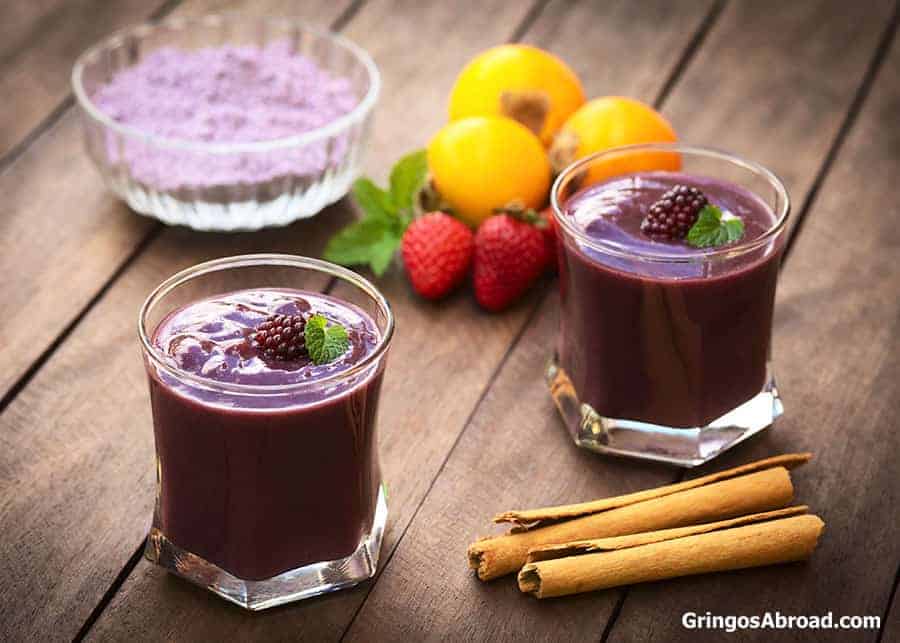
9 Ecuador Beverages You Need to Try Right Now!
For me, one of the best things about exploring a new place is trying all the local cuisine I can get my hands on.
It’s a great way to delve into the culture and history of the place you’re visiting or your new home.
- Horchata Tea
- Morocho
- Colada de Avena
- Colada Morada
- Aguardiente
- Canelazo
- Chicha
- Pilsner
- Jugos and Batidos
South American Table: Collection of 450 authentic South American recipes
Here are nine popular beverages from Ecuador. Have one to add? Join me in the comments!
1. Horchata Tea
Horchata is amazing! It can be served hot or chilled and you can drink it all through the day. It’s a refreshing herbal tea, with an awesome pop of pink.
Horchata has a lot of health benefits and has been looked to as a sort of cure-all. While I don’t think it can cure every disease, it does have many health benefits and it tastes great.
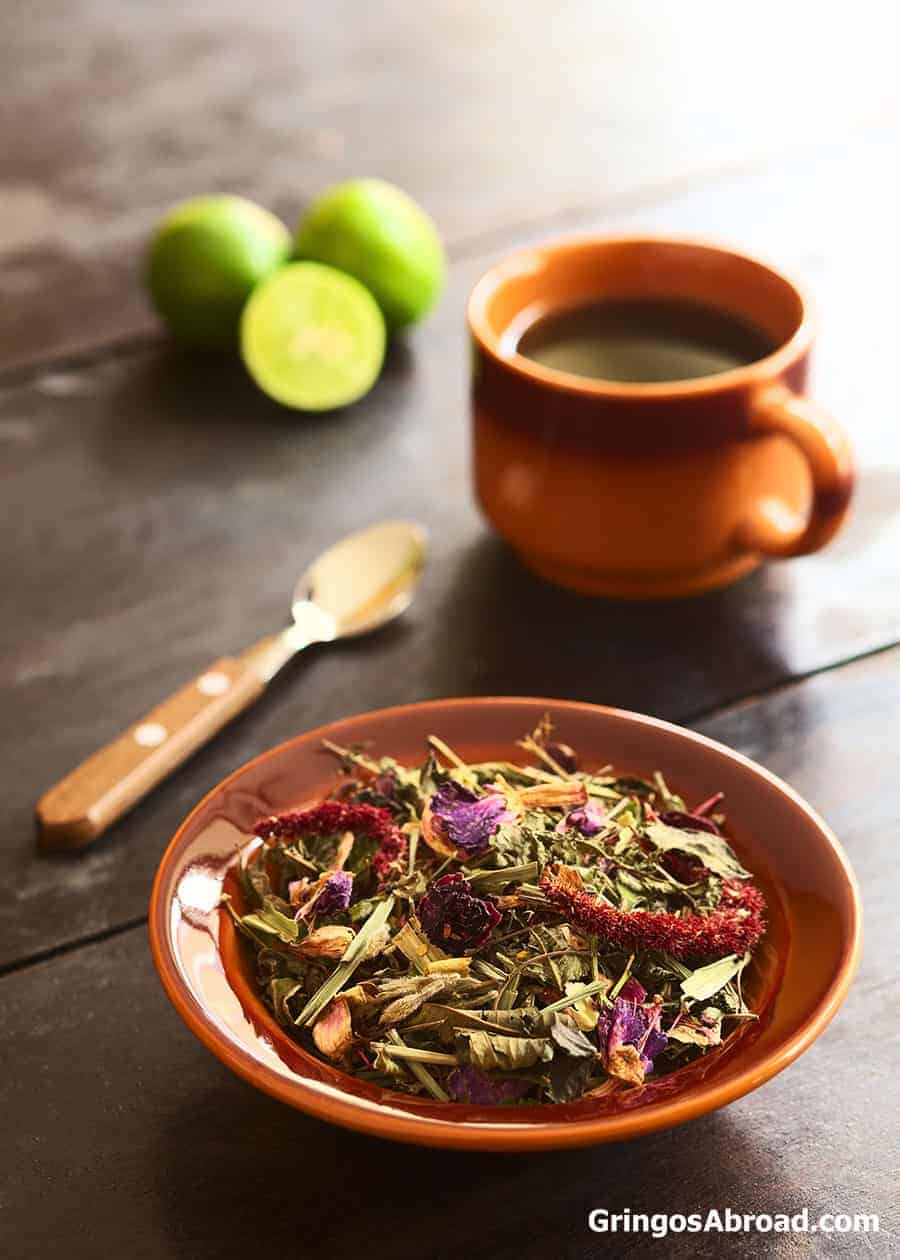
Horchata is made with 28 different herbs, lemon juice, and a sweetener (honey, panela, stevia, etc). I like it best chilled with lots of lemon!
2. Morocho
Morocho is a warm, spiced, corn pudding drink. Unfortunately, I have a corn allergy, so I couldn’t try this one.
It looks amazing though! To me, it looks like rum and raisin ice cream.
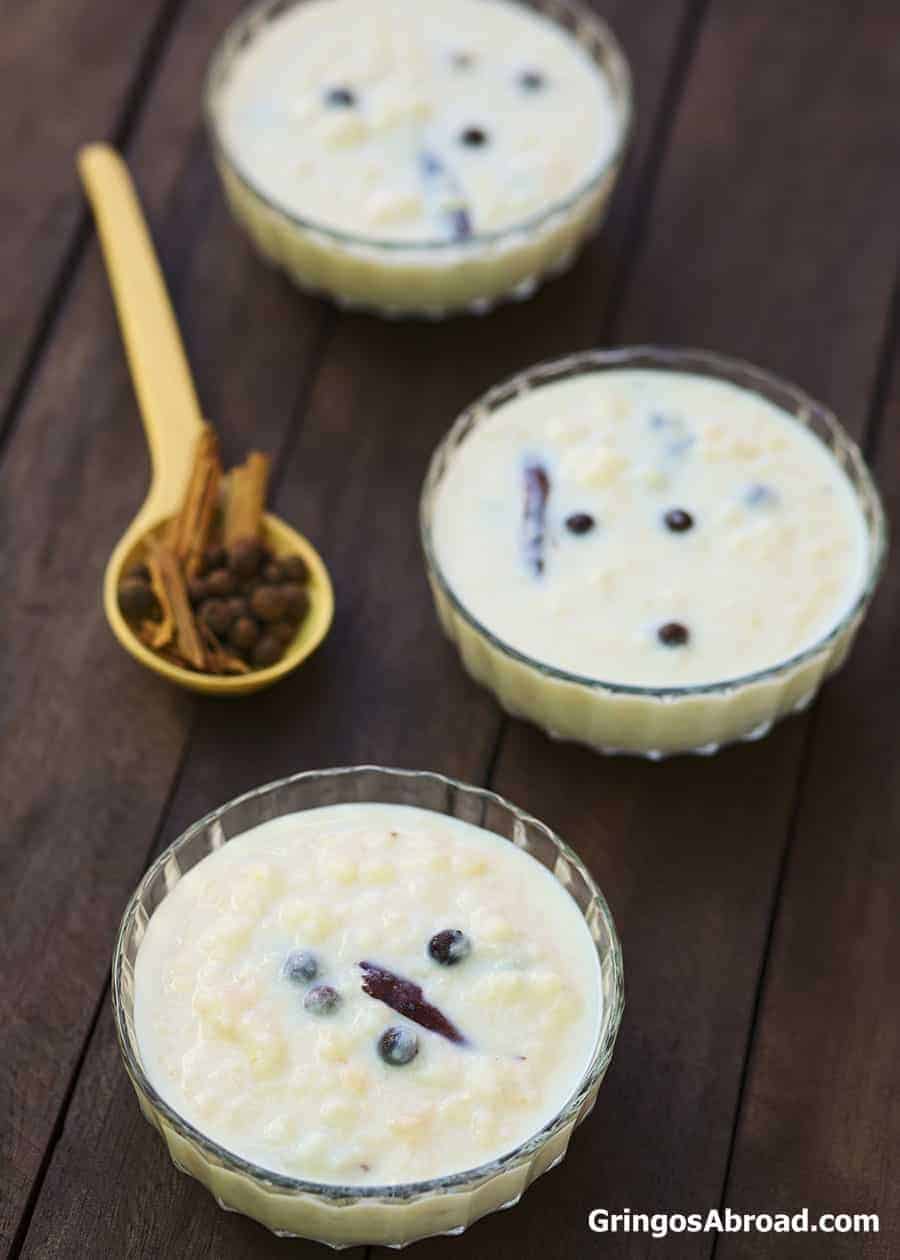
Morocho is made with white morocho corn (cracked white hominy corn), raisins, cinnamon, cloves, vanilla, orange and lemon zest, milk, and panela.
Warm morocho takes on a very smooth, pudding texture that is very pleasant when served on cold days.
3. Colada de Avena (a.k.a Quaker)
Colada de Avena means ‘strained oatmeal.’ And that pretty much wraps it all up. Colada de Avena is a delicious, well-seasoned oatmeal drink with the oats strained out.
It’s sometimes called Quaker, after the brand.
Colada de Avena is made with oats, water, panela, vanilla extract, cinnamon, allspice, cloves, naranjilla pulp, pineapple rind, and lemon. It is served warm and coupled with some soda or salt crackers.
Colada de Avena is generally less complicated than this, but we’re giving you the gourmet version.
4. Colada Morada (Spiced Fruit & Berry Drink)
Colada morada is a fruit and berry spiced smoothie with a rich deep purple color.
While you can drink it all through the year, it is typically made on November 2, All Souls’ Day (Dia de los Difuntos in Spanish).
On this day, colada morada is sometimes brought to the graveside, along with other food, to be eaten with the deceased.
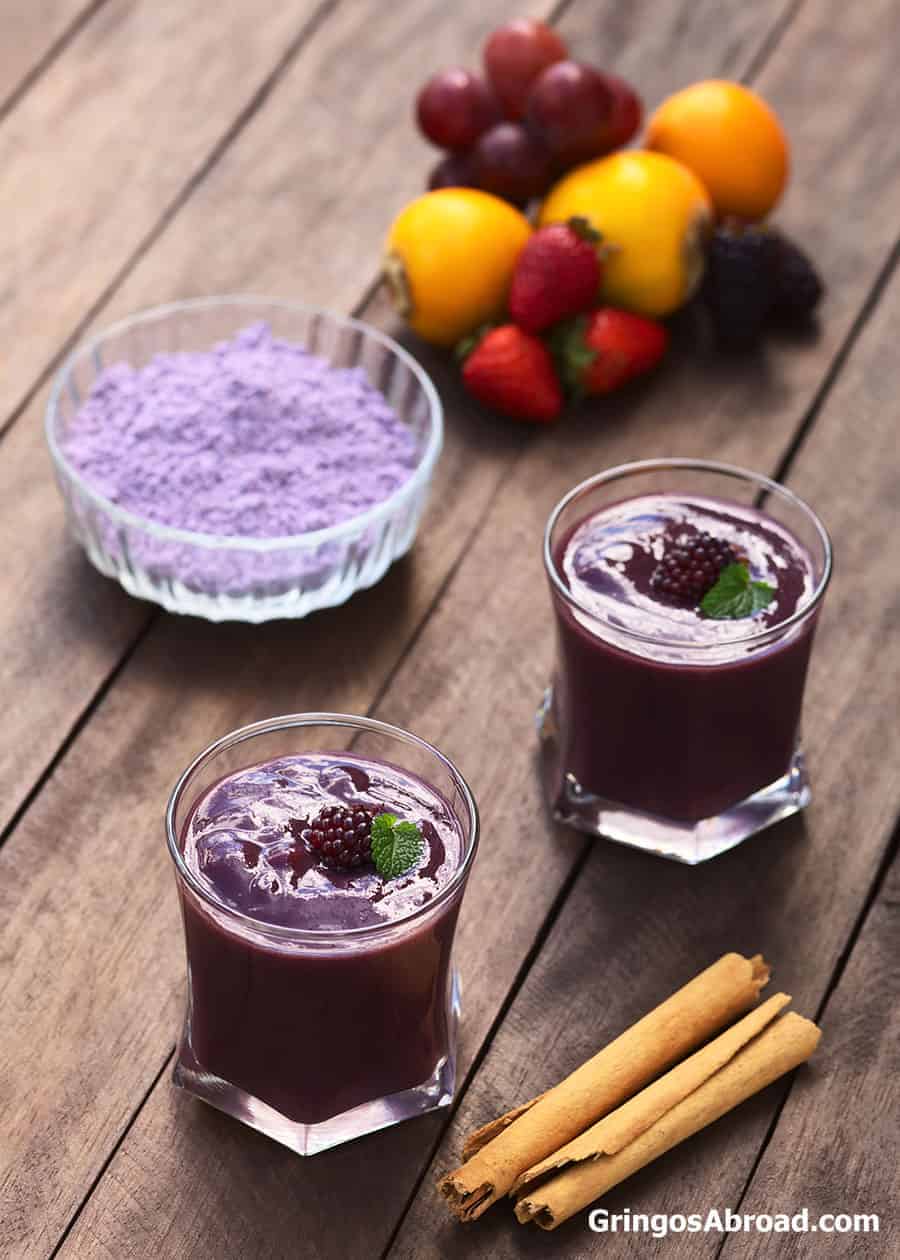
Read more about Ecuador holidays.
Colada Morada is made with black (or purple) cornflour, lots of local fruit like naranjilla, pineapple, mora (blackberries), blueberries, mortiño (Andean blueberry), and strawberry.
And tons of yummy spices! Cinnamon, cloves, allspice, lemongrass, orange peel, and panela (local cane sugar).
The colada morada is usually accompanied by an adorable guagua de pan (Kichwa and Spanish for bread baby).
5. Aguardiente (Firewater)
Aguardiente is made in many Latino countries, such as Mexico, Chile, and Portugal – in fact, it’s the national beverage of Colombia.
Aguardiente is made from cane sugar and, in Ecuador, is left unflavored. It contains from 29%-60% alcohol by volume.
Is aguardiente rum?
No. Aguardiente is similar to rum, but since unaged rum is not really rum, aguardiente is not rum. However, if aguardiente is aged for a few years (inside a wooden barrel, not ‘bottle’ aged), it becomes proper rum.
One of the most popular brands of aguardiente is Zhumir. You will commonly see people (including some students on lunch break) drinking Zhumir from sandwich bags with a straw.
Aguardiente is also a key ingredient in the very popular canelazo, a warm cinnamon rum.
6. Canelazo (Cinnamon Spiced Rum)
Canelazo is a warm alcoholic beverage served among friends on cold nights or at parties and family get-togethers.
Canelazo is made with water, panela (or brown sugar), cinnamon, cloves, anise, orange juice, lime, and aguardiente (or a white rum).
In Spanish, canela means cinnamon. So canelazo could be translated “cinnamon-afied.”
Depending on your host, the canelazo you try could have little to no alcohol content or it could be very strong. It all depends on the preferences of the maker. So be careful not to get ‘drunk out of your mind,’ when all you were really going for was a warm cinnamon drink.
Families will also make a non-alcoholic canelazo for children to drink. It’s made the same way as the original, but without the aguardiente.
7. Chicha
Chicha is a fermented yuca drink common in Ecuador’s Amazon. It is a very important cultural beverage and it may be seen as an insult if refused.
Chicha is made from boiling yuca root and then chewing and spitting the softened root. It is then chewed again by a bunch of different people -normally the women until it’s nice and mushy. Then, chicha is left to ferment.
The saliva is actually a very important part of the fermentation process and speeds it up quite a bit. However, there is a spit-free version available at some restaurants (and can be made at home) for those of us who are a little less adventurous.
8. Pilsner
Pilsner is the most popular beer in Ecuador. It’s a blond, slightly sweet, grainy beer that you can find at pretty much any tienda (small store or corner shop).
Much of their marketing includes the famous image of a hand with the index finger raised and the slogan “Un dolar! No pages mas!,” which means, “One dollar! Don’t pay any more!” And, “Ecuadorianamente Refrescante!” which basically means “Ecuadorian-ly Refreshing.”
Pilsner is a sponsor for the B.S.C (Barcelona Sporting Club) – strangely enough, this ‘Barcelona’ club is an Ecuadorian soccer team based in Guayaquil. Because of this, Pilsner is seen all over the soccer (or as they, and everywhere else except the US and Canada, say football) jerseys, and likely accounts for much of its popularity.
9. Jugos and Batidos (Naranjilla, Tomate de Arbol, Maracuya)
Jugos y batidos (juice and milkshakes) come in every imaginable fruit flavor.
Now, you may be wondering why I’m including juice and milkshakes in a post about traditional Ecuadorian beverages.
Well, it’s not that it’s fruit juice, so much as the kind of fruit that goes into these milkshakes and juices.
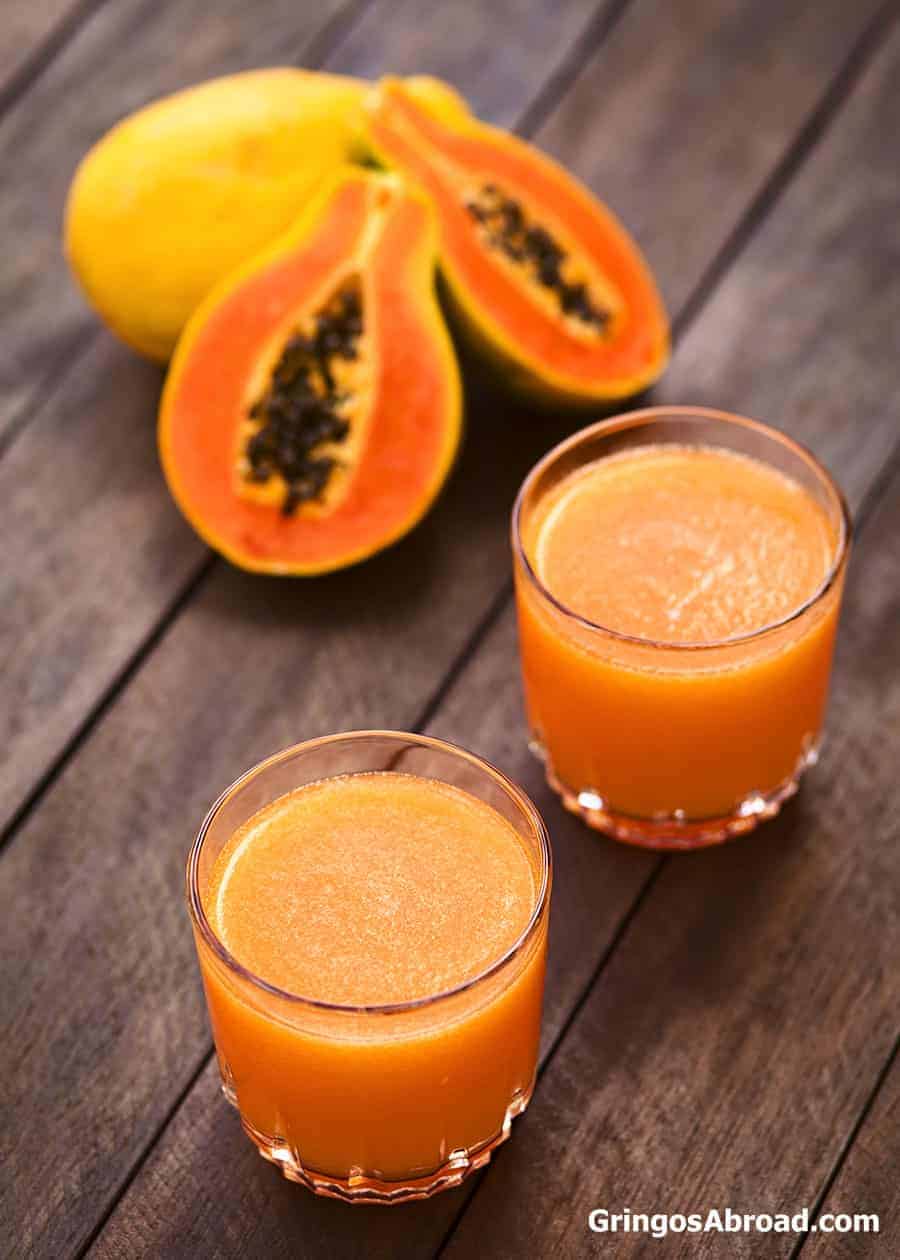
In Ecuador, they make jugos and batidos out of pretty much any local fruit, such as naranjilla, tomate de arbol, guaba, maracuya, prickly pear, papaya, mango, pineapple, and many more.
Hungry for even more? Check out our huge guide to the best food in Ecuador.
A Word of Caution About the Water…
While all these Ecuadorian drinks are delicious, there is a need to be careful. Now, a lot of people really don’t like it when we bring up the possibility that the water in Ecuador is not safe to drink.
However, I feel that it is important to bring up this issue because if you didn’t know, you’ll wish you did.
Some areas of Ecuador (such as downtown Cuenca) have a good water filtration system, and the water is generally safe. But this is not the case in other areas of Ecuador (even some water in Cuenca is unsafe).
Because they travel in the water, amoebas and parasites are very common. Now, while these aren’t the parasites from horror movies, they are extremely unpleasant and better avoided.
How to Improve Your Chances of Staying Parasite Free:
- Make these drinks at home, with your own supply of water that you know is safe
- Ask at the restaurant if they use bottled water in their beverage preparation
- Carry around your own portable water filtration device (such as the Steripen)
While these might seem drastic, you’ll enjoy your trip much more if you’re not stuck in the bathroom for most of it. Not to be to ‘punny,’ but if you get amoebas, you’ll want to “show them the way out,” rather quickly.
But don’t freak out! Even if you ignore everything I just said and end up getting parasites and missing the best part of your trip doubled over the toilet in humiliating agony, you can get rid of your hitchhikers quite easily. All you need are a few bitter-tasting parasite meds and you’ll be good as new.
9 Awesome Ecuador Beverages
I hope you’ve enjoyed this list of some of the most common Ecuador beverages! There are many more, but I’ll let you discover those for yourself.
Please tell us about your favorite Ecuador beverages or traditional dishes in the comments – we love to hear from you!
For some more mouth-watering Ecuador food, check out some of our other posts like:
- What Do People in Ecuador Eat? My Favorite 15 Foods
- Pork and Cuy: Street Food in Cuenca Ecuador
- 16 Must Try Ecuador Desserts

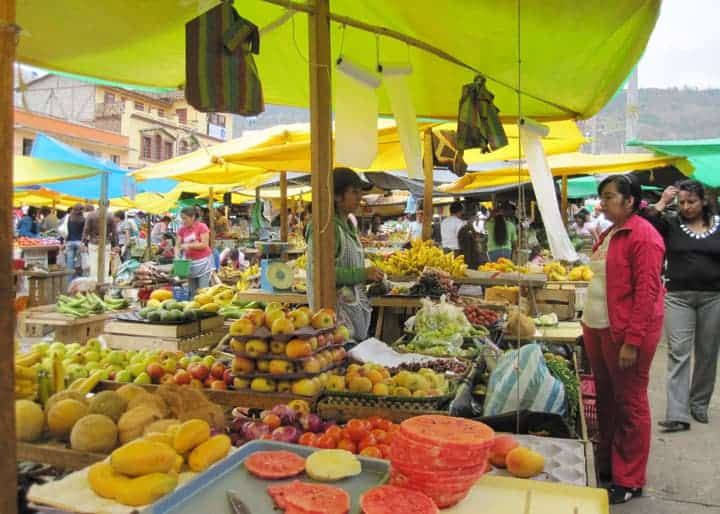
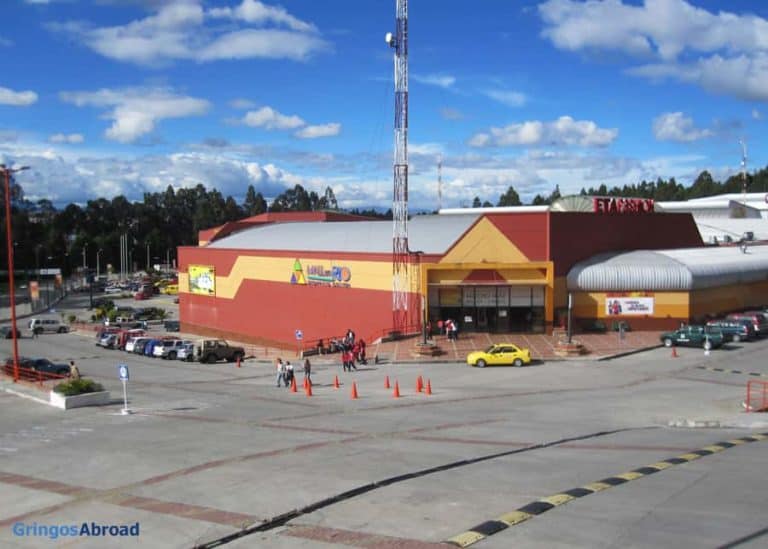
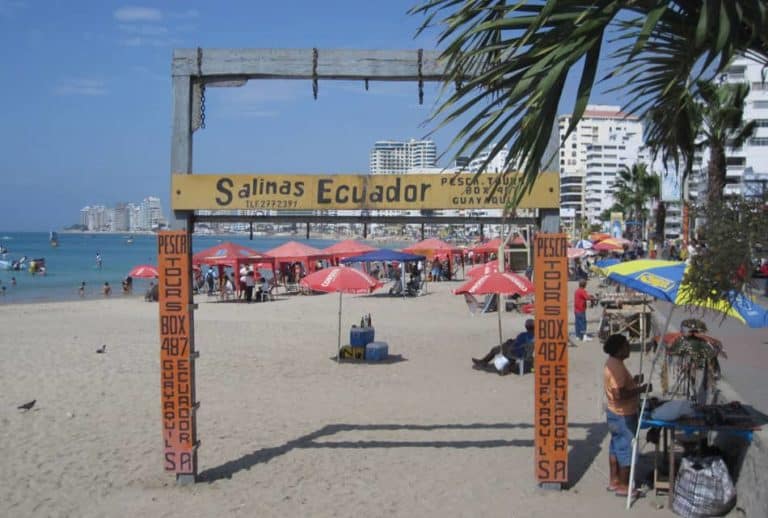
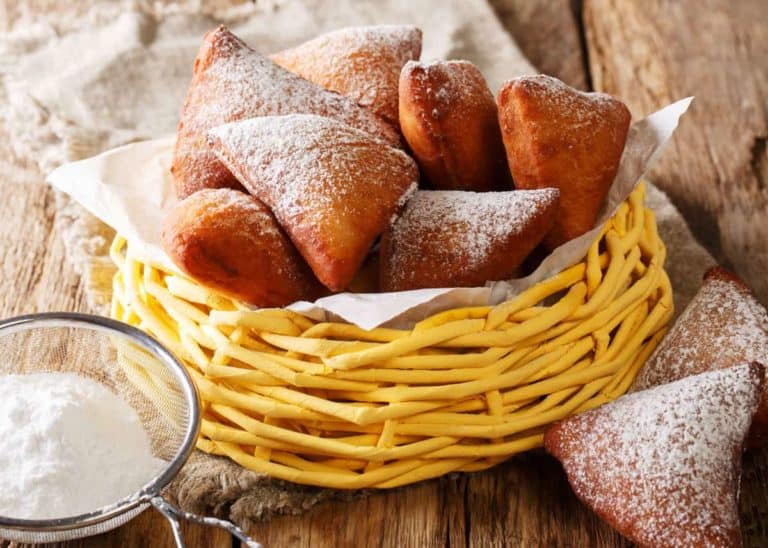

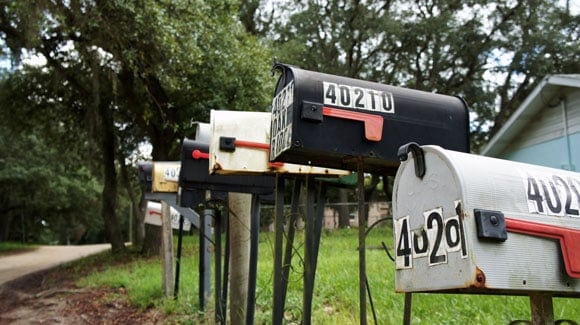
Great post! Thank you for sharing it. Canelazo is the best drink ever. 😎 It’s originally from Cuenca.
Hello,
I went to Las Tunas, Ecuador for five weeks on a college trip. My host family served me a pink tea regularly but they didn’t know the name of it. My host mother said the tea leaves came from Venezuela. She said it was medicinal. It was brewed from leaves (single ingredient). I am desperate to know what it is but I can’t find information anywhere. It was almost floral in taste, not fruity. Do you know what it might be?
Hola…es muy buena la información que trasmiten, me gustaría saber sobre el café y chocolate que produce Ecuador…
Anticipo las gracias.
I am planning trip to Ecuador and will visit Quito, Cuenca and Riobamba, etc. Since I use a CPAP machine and am a type 2 Diabetic.
I would like to know if I will be able to take my CPAP machine? I will be taking my insulin medication.
Is there anything that I have to know about any steps that I should take for our trip? And, will I have any problems with the high altitude?
Is there any sites I can read about these matters?
My dad traveled to Ecuador many times with his CPAP machine – no trouble at all.
Most travelers don’t have any trouble with the altitude. Just take a few slow days when you arrive and then work up to your usual level of activity. We see a noticeable difference from 8,000 to 10,000 feet. There is another effect of high altitude that isn’t talked about much…
All the best on your trip!
The best in this all beverages is the Horchata tea
Well we are getting our share of Snow here in Welland , How about you??
Bryan I want to take this time to thank you and your family for your patience and understand of an aspiring Expat
Correct me if I am wrong I’m still learning Chuckle
Feliz Navidad y un Feliz y Saludable Ano Nuevo para todos ustedes
Que Dios los bendiga y protija a usted y a su familia Siempre
I have tried all but one of the drinks you mentioned and love them all (you are really missing out by not being able to drink morocho!). I tried sábala the other day … Hmmm… Definitely not one for my favourites list! Was like drinking a jellyfish 😝